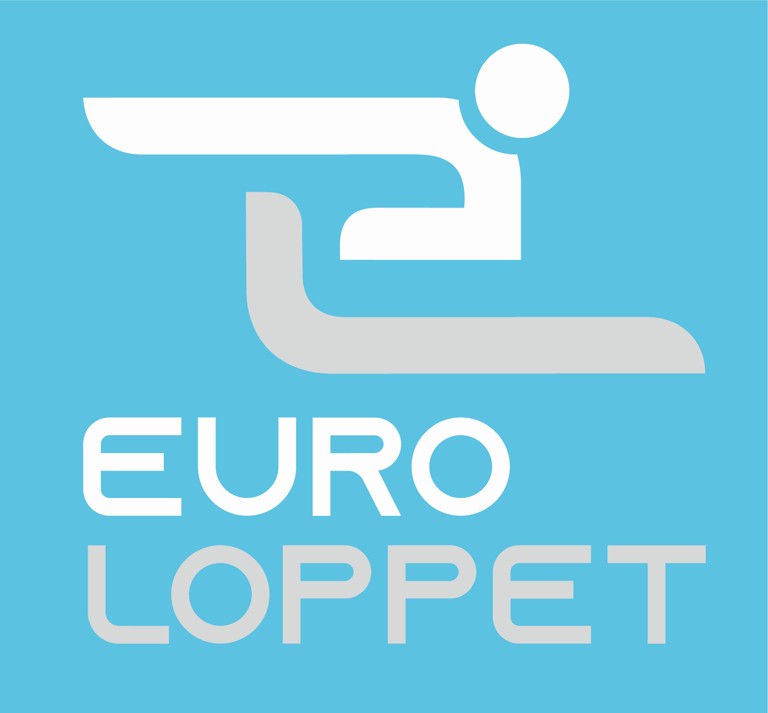Dream fulfiller: Always fast skis with the right hand structure and coating
by Dr. Jörg Rathenow
paid content by Flexxit
Every ambitious recreational athlete has one dream: The perfect, fast ski that remains fast over a wide temperature range in the current competition conditions and also lasts over a long distance. But, obviously, that is not so easy. There are the following three challenges:
- Weather conditions: Weather change, fresh snow, temperature change from morning, midday, evening, night.
- Snow conditions and preparation of the trail: Before the competition, the trails are re-groomed and groomed, possibly covering fresh snow with hard old snow.
- Ski quality: pre-tensioning, base and grinding.
The quality of the skis can hardly be changed at short notice. That’s why professionals always have a number of different skis for different conditions. However, good skis with a good cut, adapted to the ability and stature of the skier, are the basic prerequisites for fast skis in the race.
The snow conditions can be determined quite reliably and can be well characterized by the moisture content, temperature and grain structure. Most of the time, people are currently skiing on artificial snow or converted snow, but this can change very quickly with fresh new snow.
The weather conditions pose the greatest risk and may require a quick adjustment of the ski preparation on race day. Basically, we find four different situations:
- cold snow: aggressive snow crystals, dry and hard, the snow crunches, no water film in sight, pure solid friction snow crystals – ski base. Here we need the hardest coating, a fine grind, a fine structure and maximum pretension in the ski (little contact surface with the snow, stable, load-bearing base) so that the sharp-edged snow crystals cannot cling to the base.
- fresh snow: Sharp-edged, filigree snow crystals, yet soft and compressible, mixed friction between snow crystals, ski base and water film, require a hard glide coating; temperatures around freezing point require a high degree of flexibility in the grinding and glide coating, as a water film can easily form if the temperature rises slightly to above 0°C. This water film then needs to be applied to a larger extent than usual. This water film then requires a coarser structure, a softer coating (which must still be able to be polished and optimised through mixed friction with water and snow crystals) and a high hydrophobicity of the glide coating. In addition, skis with a lower preload (more contact surface), which reduce the “digging” of the ski into the soft, less stable snow.
- old snow, artificial snow: converted or artificially produced snow crystals that have been rounded off by conversion or artificial production, mixed friction between snow crystals, ski base and water film. The artificial snow is produced using many different processes and can therefore also have different grain structures through to crushed crushed ice. The base is usually hard, but changes greatly as the temperature rises: Here, too, a film of water is created, which requires coarser structures, a softer coating and a high hydrophobicity of the sliding coating.
- wet snow: Deep, soft snow with a pronounced water film, predominantly liquid friction, air temperatures above 0°C. The coarsest grinds and structures are required here, the lowest preload in the ski (large contact surface), very soft coatings and maximum hydrophobicity to remove the water film and prevent the base from sticking to the water film. Even with this mixed friction between water (liquid), snow and ski base (both solids), the glide coating still needs to be polished and optimised by the snow crystals. It is precisely here that the hand structures in combination with Flexxit Ski Coating offer an optimum substitute to completely replace the fluorine products that have been eliminated by the fluorine ban.
Quick and easy coating instead of time-consuming waxing
Classic hot waxing with several layers of different products is very time-consuming and can usually no longer be tested shortly before the start.
Modern glide coatings based on water glass, on the other hand, are not only fluorine-free, environmentally friendly and solvent-free, they can also be applied very easily, quickly and cleanly by any athlete. The aqueous liquids are efficiently applied thinly and evenly to the ski base in the required quantity. The products dry quickly at room temperature without emissions and can then be polished out immediately. To accelerate drying and ensure even distribution on the base surface, the still wet Flexxit can also be rubbed in with a cork brush (for cold conditions, reduces the base structure) or felt rotor brush (for wet conditions, opens up the base structure). As no heat is required for the application, this application is very gentle on the ski base. Skis prepared in this way are immediately ready for use and can also be tested straight away.
The application is very health-friendly for the athlete or wax technician, odourless, emission-free and fast, even if he has to prepare many pairs of skis in a confined space. Furthermore, no power connection for an iron or expensive protective equipment is required. There is no aging for the environmentally friendly, inorganic Flexxit products and the skis prepared in this way can be safely stored for very long periods of time. The skis can therefore be prepared in advance in the comfort of your own home under optimum conditions.
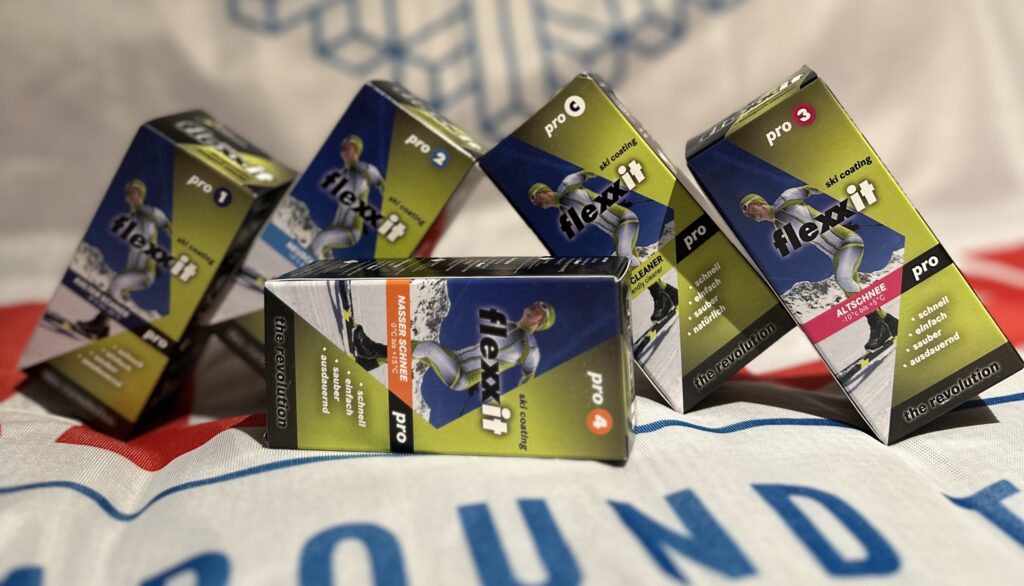
Game changer hand structure
These basic preparations can also be used to imprint hand structures immediately. In contrast to grinding, hand structures are applied to the ski base by hand using so-called structuring devices (1). The structure devices are about the size of a mobile phone and emboss the different structures into the ski base in a regular pattern using different metal structure rollers. The main effect of these embossed structures is to reduce the friction between the ski base and the snow crystals, to reduce the sticking of the ski base to any water film that may be present and to change the existing ski finish.
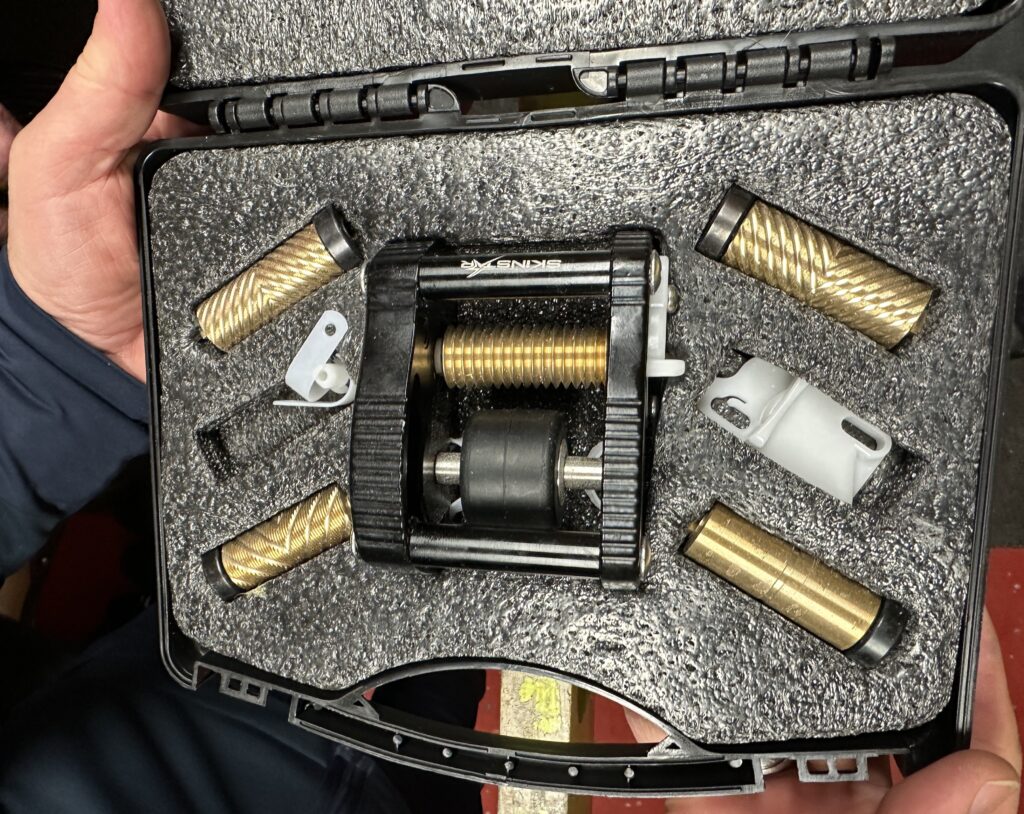
Skis modified in this way are only brushed out once and can also be tested immediately. In the case of hand structures, a distinction is made between linear structures (in the direction of the ski) and crossed structures (orientated diagonally to the side). A distinction is also made between structures that are applied over the entire ski and structures that are only applied over a partial area. Linear structures in particular are often only applied to skating skis from the binding to the end of the ski. These manual structures are suitable for changing the ski base or its structure for a long distance and maintaining this change. The process of imprinting the hand structure can be compared to a craft that requires experience and skill(2). The device must be applied with even pressure across the width of the ski and then with higher pressure at the end in order to achieve a reproducible, homogeneous result that can be easily recognized visually. Usually, Flexxit representatives are onsite at the most important Skimarathons to help you with the correct application on the skis.
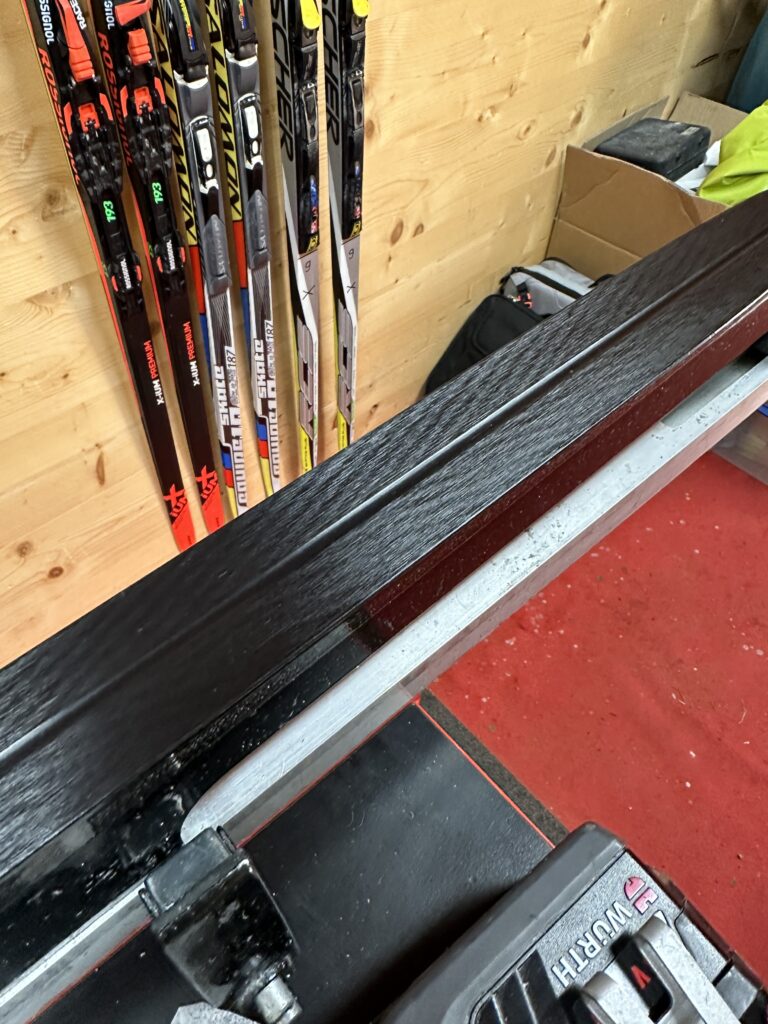
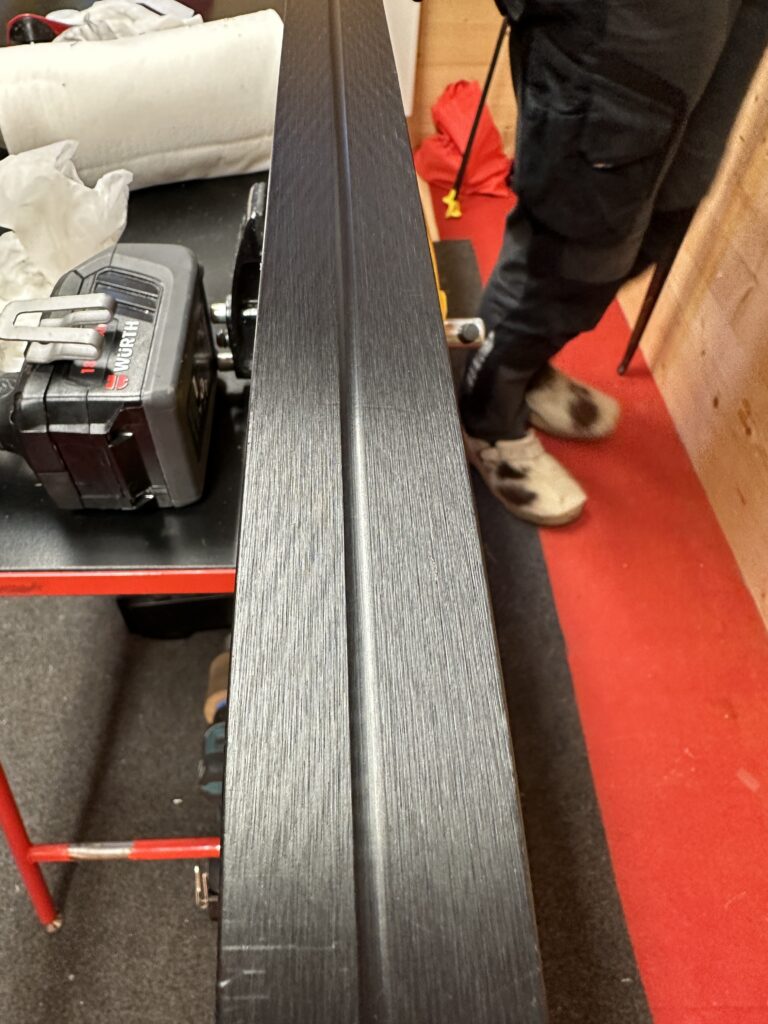
Coating and hand structure combination brings maximum flexibility
In professional practice, two independent sets of test skis are used, whereby one set without hand structure is used to determine the most suitable Flexxit coating version and the second set is used to determine the optimum hand structure for this Flexxit coating version.
Thanks to the combination of the innovative Flexxit glide coating and the hand structure, the skis can be quickly and flexibly adapted to the current conditions until shortly before the start. However, it is strongly recommended to test the chosen combination of Flexxit ski coating and selected hand structure before the race, preferably the day before at the same time as the start time and on typical sections of the course, ideally on the original trail and with a timed course in standardized test processes.
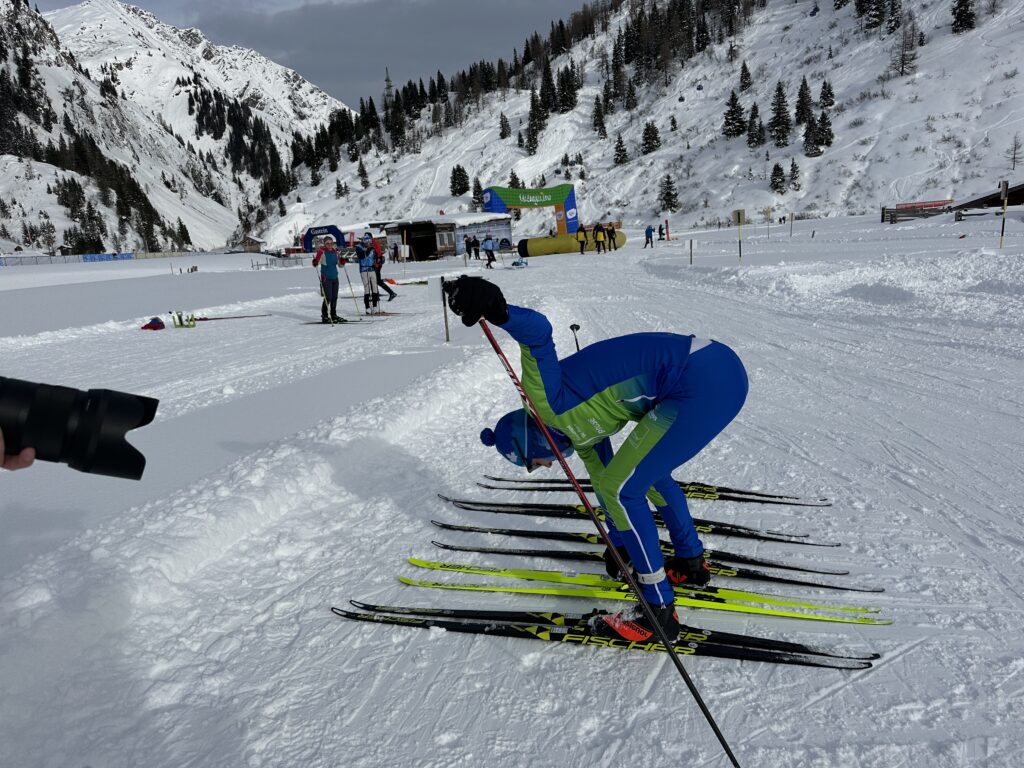
It is usually very cold at the beginning of the season, so that ambitious recreational athletes can start with finer hand structures. As the season progresses, it gets warmer and coarser hand structures are required, but these can simply be moulded over the finer structures. Before the start of the new season, the skis can be reconditioned by thermal treatment (e.g. hot waxing) or grinding.
Fast behavior over longer distances
In their 2014 book “Smøreboka”(3), Norwegian top athletes and waxing experts Jørgen and Anders Aukland also incorporated the experiences of numerous Scandinavian World Cup waxers. They mainly described classic ski marathons. Here it is important that the skis are still travelling fast after 30, 60 and 90 km and do not degrade. It is important that the structure of the ski base does not pick up any dirt that could slow the ski down. That’s why they mainly recommended linear structures back then. In the case of crossed structures and V-structures, their experience with classic hot waxes was that although they were very fast right from the start, after distances of 30 kilometres or more they could pick up more dirt and therefore lose a lot of speed. However, V-structures have also proved their worth in skating races. The Auklands have usually structured the entire ski. With skating skis, structuring from the binding to the end of the ski can ensure that the ski goes “well off the foot”. The wetter the conditions are, the coarser the structures used should be (possibly also using higher pressure).
However, other national teams and top athletes have also been regularly using V and linear hand structures for some time in order to adapt the skis individually and permanently to the prevailing weather conditions.
In tests, we have found that the combination with the glass-like hard Flexxit Ski Coating variants results in significantly better soiling behavior than with other glide coatings and therefore crossed and V-structures remain very fast over long distances.
The unique thing about the combination of Flexxit with hand structures is that the hand structure can also be applied first. The imprinted hand texture can then be overcoated with the Flexxit variant and brushed out, as no temperature is required for the application of Flexxit. Temperature would cause the embossed structure to regress (memory effect of the thermoplastic polymer of the ski base, which happens with classic hot waxing, for example).
However, you can also apply the Flexxit version first, brush it out thoroughly and then apply the hand structure. This then only needs to be polished again with a Flexxit steel hand brush.
Both methods deliver excellent results in terms of durability and speed.
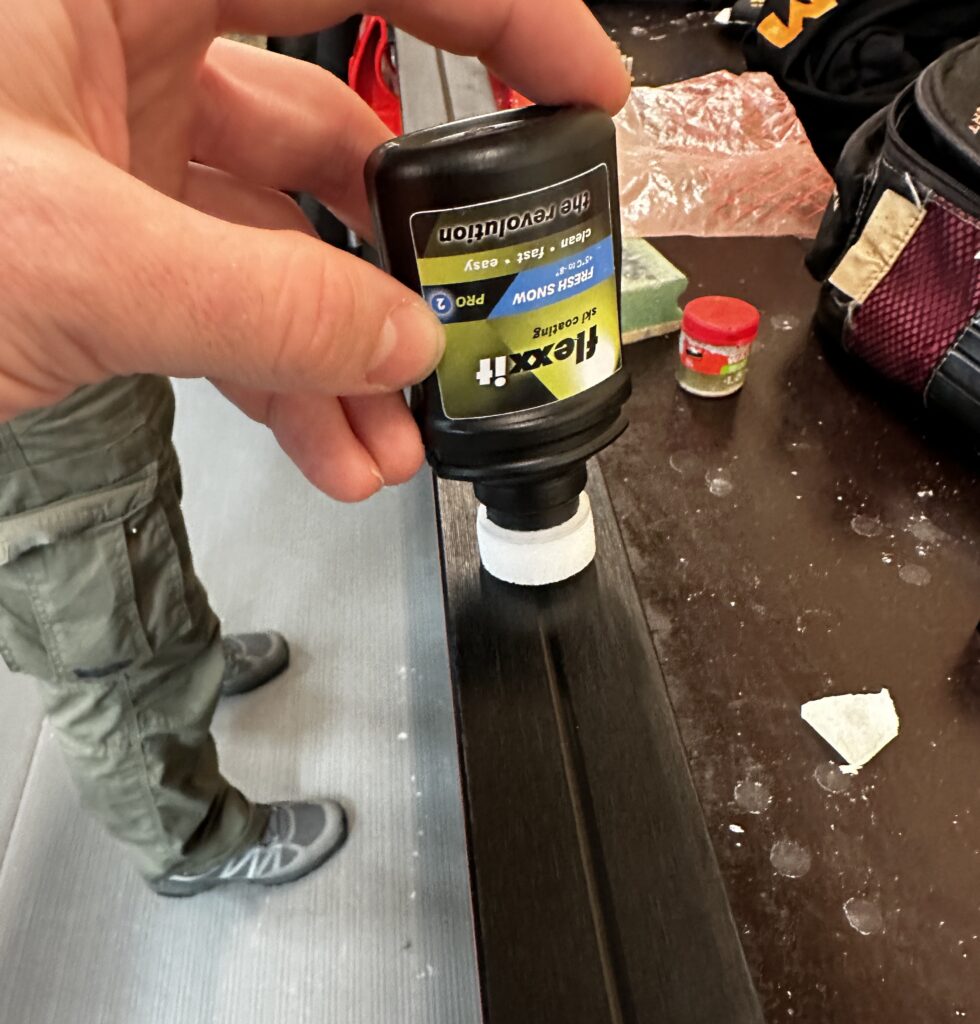
Flexxit Ski Coating is also characterized by the fact that it is glass-like hard after drying. It is actually an elastic glass that is firmly anchored to the ski surface. This hardness ensures that the Flexxit variants last for very long distances as they are hardly rubbed off. It also ensures that the sharp-edged snow crystals can slide easily on the surface and cannot get stuck in it. And it also means that hardly any dirt is picked up from the trail as it cannot stick to the hard surface. This is why the combination of Flexxit with the hand structures is so optimal, as the hand structures can often lead to poorer gliding properties over longer distances due to the high dirt absorption.
Furthermore, Flexxit Ski Coating adapts perfectly to the properties of the snow crystals due to its optimum hydrophobicity and is therefore largely independent of the temperature range in which it is used. The hydrophobicity then ensures that any film of water is optimally removed and cannot cling to the ski base. This is particularly positive as the outside temperature changes significantly throughout the day.
For ideal preparation, choose the Flexxit version for the cold conditions at the start in the morning. The cold conditions lead to a Flexxit version that is as hard as possible and therefore as abrasion resistant as possible. The aggressive, cold snow is then able to perfectly polish and optimize the corresponding Flexxit version in the morning. However, this must be brushed out really well, e.g. with the Flexxit Finish Brush (hard nylon brush or ultra-fine steel brush), in order to carefully expose the structure of the ski again, because the structure is urgently needed at midday in order to be able to remove the water film that is then present together with the optimum hydrophobicity of the Flexxit version and to prevent the ski from clinging to this water film.
However, it is still a hard and therefore durable Flexxit version. In the afternoon, when it gets cold again, the Flexxit version feels really good again and ensures that the skis can continue to glide very quickly and last over long distances thanks to the low dry soiling.
Optimum speed and long-term durability with Speed Finish
We always recommend the combination of a basic preparation with the Flexxit Pro version and a post-treatment with the corresponding Flexxit Speed Finish version for optimum speed and long-term durability. In addition, the ski should be thoroughly brushed out with a rotor brush (hard nylon brush) and cleaned with the Flexxit Cleaner before treatment with Flexxit for optimum long-term durability.
The Flexxit Cleaner is able to dissolve the Flexxit coating so that the Flexxit can simply be wiped off or brushed off with a dry cloth. This makes it easier to quickly test different Flexxit variants, as you immediately have a clean ski for the next test run.
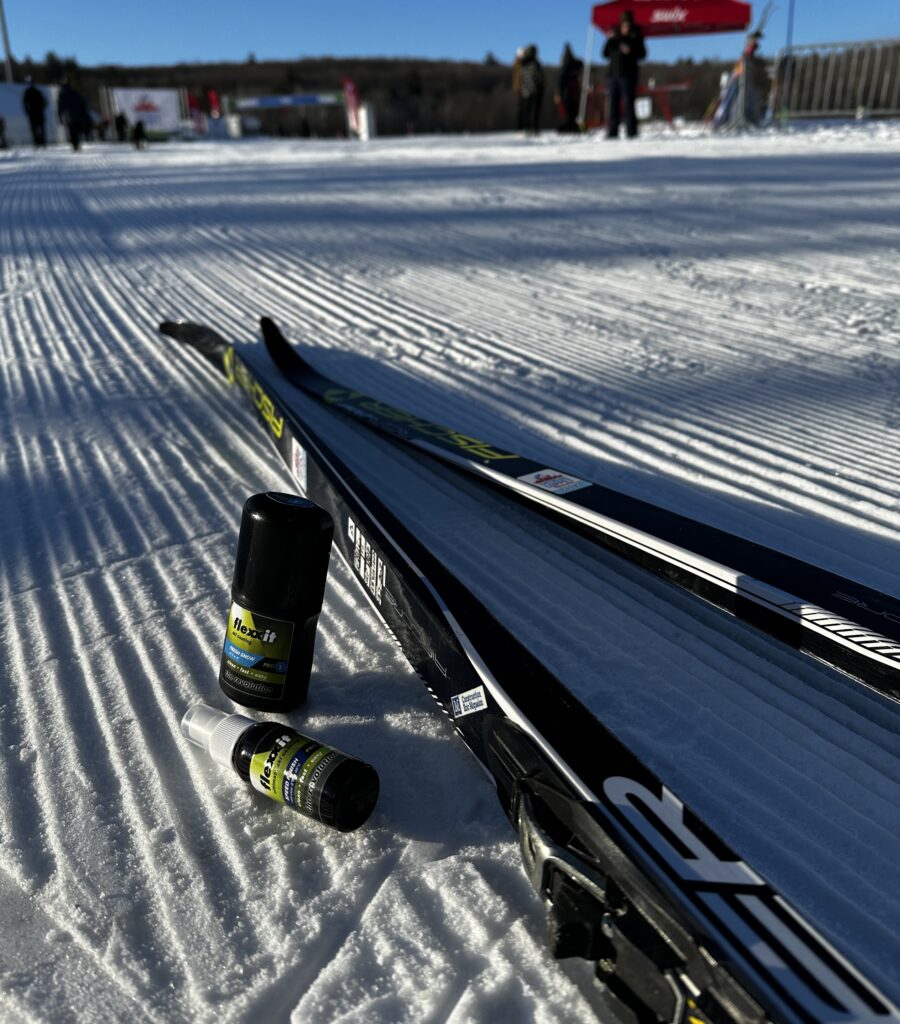
And over the summer time?
For the summer months, Flexxit, especially the variants for wet snow such as Flexxit Pro 4, offers excellent corrosion protection for the ski base so that it can be stored safely. At the start of the season, the base surface can then be cleaned easily, quickly and cleanly with the Flexxit Cleaner and the ideal Flexxit version for the respective conditions can then be applied.
We wish you lots of fun on the cross-country ski trail and at your competitions in the beautiful countryside!
Live Talk: Fluoro free waxing
About the Author

Dr. Jörg Rathenow holds a doctorate in chemistry and studied in Marburg. As part of his diploma and doctoral thesis, he travelled to Florence in Italy and then worked in large-scale chemistry. Since 1998 he has been working in the field of innovative coatings, nanotechnology and material development and has already written a patent on ski coatings in 1999. He has a very broad international experience base and is an expert in new, environmentally friendly materials and coatings.
References
1 Matthias Scherge, On the effect of structural devices, Gliding, 1, 1-5, 2020
2 Thomas Östreich, Structural devices – voodoo or insider tip?, Gliding, 2,9-16, 2022
3 Aukland, Anders and Jørgen (2014): Smøreboka. Oslo: Kagge Forlag AS
BACK

